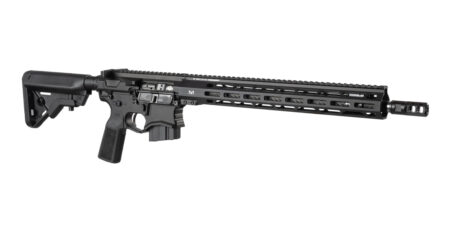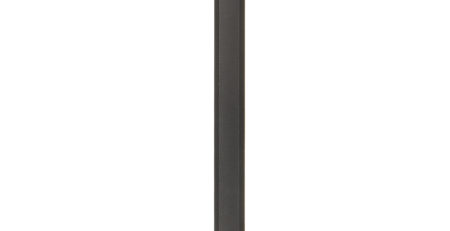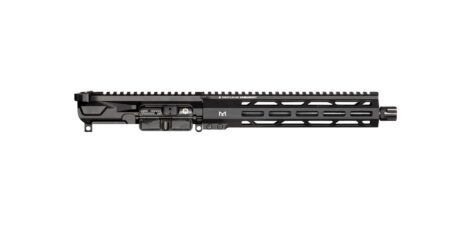Is Suppressing a .22 Worth It?
A Practical, No-Fluff Guide to the .22 Caliber and if it Needs a Suppressor
If you own or are considering a .22LR rifle or pistol, whether that be for varmint hunting, backyard plinking, or even self-defense, you’ve probably asked whether adding a suppressor makes sense. Short answer: for a lot of shooters, yes — but it depends on how you use the gun. Below, our team at Next Level Armament has put together a clear breakdown of the benefits, trade-offs, and practical buying tips to help you decide.
Let’s dive in.
Why Shooters Add a Suppressor to a .22
Quieter Shooting and Better Hearing Protection
A .22LR is already quieter than most centerfire cartridges because many .22 loads are subsonic or marginally supersonic, which reduces a sharp sonic crack and helps a shooter stay hidden. Adding a suppressor reduces muzzle blast substantially, making long range sessions and backyard plinking much easier on your ears. For anyone who shoots frequently, trains others, or wants to avoid disturbing neighbors, the noise reduction is a major advantage.
Improved Communication and Training Environment
A suppressed .22 makes it easier to teach and coach. Students flinch less and can focus on fundamentals when they aren’t expecting a loud report after every shot. That leads to faster learning and smoother instruction sessions because coaches and students can talk between shots without shouting.
Potential Accuracy and Comfort Gains
Suppressors can alter barrel harmonics and reduce the perceived impulse when the gun fires, whether this is a long range rifle or your concealed carry weapon. That can translate to tighter groups through two avenues: mechanical improvements to point-of-impact consistency and reduced shooter anticipation/flinch. Many shooters using a suppressed .22 report steadier holds and improved shot consistency, though results vary by firearm, mount, and ammo.
Lower Cost Than Centerfire Cans
Because .22LR operates at lower pressure and generates less gas and heat than centerfire cartridges, rimfire suppressors can be lighter and simpler in design. That typically means a lower price point, which makes suppressing a .22 an affordable entry into suppressed shooting for many people.
The Downsides and Trade-Offs
Paperwork and Transfer Steps
Purchasing a suppressor usually involves administrative steps that are different from buying other firearms accessories. There is a process to legally transfer ownership that varies by jurisdiction (and historically has included a federal tax stamp and background steps). While many dealers and transfer services simplify the paperwork, you should expect extra steps and time when buying a suppressor. Also, laws vary by state, so check local regulations before committing.
It’s Not Silent
A suppressed .22 is much quieter than an unsuppressed centerfire, but it is not silent. The suppressor reduces muzzle blast, but you’ll still hear a sound — often compared to a loud pellet gun or air rifle. Hearing protection is still recommended during extended shooting sessions, especially for shooters and bystanders.
Compatibility and Fitting Considerations
You’ll need a way to mount the suppressor: a threaded barrel, a thread adapter, or a quick-attach mount. Thread pitch and mounting style matter; common .22 thread patterns exist, but you should confirm compatibility with your specific firearm. Also be mindful of which cartridges a suppressor is rated for: some lightweight rimfire suppressors are designed strictly for .22LR and aren’t recommended for higher-pressure rounds like .22 Magnum or .17 HMR.
Maintenance Needs
Rimfire suppressors tend to collect a lot of lead and powder fouling. That means periodic cleaning or modular baffle maintenance may be required. Some modern designs make cleaning simpler (modular stacks, user-replaceable baffles), but maintenance is a part of long-term ownership you should budget time for.
When a Suppressed .22 Is Especially Worth It
-
You teach or train new shooters and want a friendlier sound environment.
-
You practice a lot at the range and want to protect long-term hearing.
-
You hunt small game or control pests in early-morning or noise-sensitive areas.
-
You want quieter backyard plinking without upsetting neighbors.
-
You plan to use a .22 trainer to build skills that translate to larger calibers.
Practical Buying Tips
-
Match the Suppressor to the Ammunition You’ll Use. Verify the suppressor is rated for the cartridges you plan to run — .22LR, .22 Magnum, and .17 HMR have different requirements.
-
Confirm Thread Pitch and Mounting. Many rimfire barrels use common patterns, but don’t assume compatibility — check your barrel or plan for an adapter.
-
Consider Weight and Length Trade-Offs. Lightweight models are easier to handle but may have different durability or fouling characteristics than heavier designs.
-
Factor in Maintenance. Decide whether you want a model that disassembles for cleaning or one with replaceable baffles. Regular users should plan on periodic cleaning.
-
Budget for Transfer Costs and Time. Even if the suppressor itself is affordable, transfer fees and any service charges for paperwork add to overall cost.
Is It Worth the Investment?
For many recreational shooters, trainers, and varmint hunters, suppressing a .22 delivers significant benefits for a relatively modest cost and manageable maintenance. If you value quieter shooting sessions, improved training conditions, and the potential for better accuracy or less flinch, a .22 suppressor is often a worthwhile addition. If you rarely shoot, are constrained by local laws, or don’t mind loud range sessions, it might not be necessary.
.22 Suppressor Wrap Up
If you’ve decided a .22 suppressor is for you, Next Level Armament is an excellent choice to consider. They specialize in rimfire suppressors designed with practical users in mind: lightweight profiles, modular options, and straightforward specifications that make it easy to match a suppressor to your firearm. Their product line focuses on making suppressed rimfire shooting accessible, and they’re known for designs that balance affordability, durability, and ease of use. For a capable, user-friendly .22 suppressor geared toward backyard shooters, trainers, and varmint hunters, Next Level Armament is worth checking out.
Be sure to check out Next Level Armament and follow us on Instagram!






Leave a Reply
You must be logged in to post a comment.